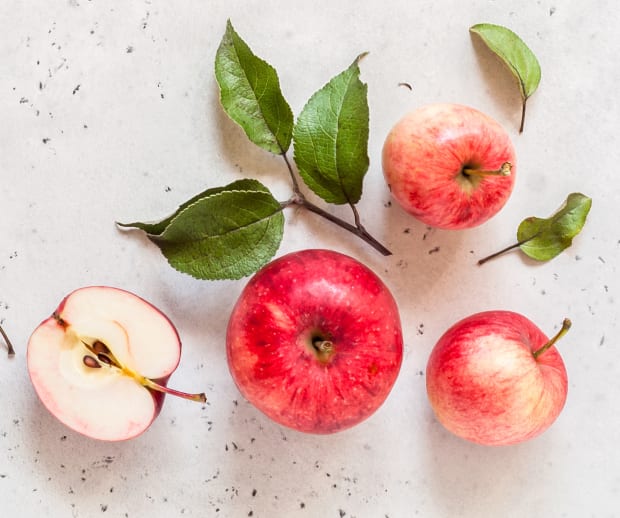- Like
- SHARE
- Digg
- Del
- Tumblr
- VKontakte
- Flattr
- Buffer
- Love This
- Save
- Odnoklassniki
- Meneame
- Blogger
- Amazon
- Yahoo Mail
- Gmail
- AOL
- Newsvine
- HackerNews
- Evernote
- MySpace
- Mail.ru
- Viadeo
- Line
- Comments
- Yummly
- SMS
- Viber
- Telegram
- JOIN
- Skype
- Facebook Messenger
- Kakao
- LiveJournal
- Yammer
- Edgar
- Fintel
- Mix
- Instapaper
- Copy Link
Q: Is there any reason I should change what I eat based on the season of the year?
A: Yes. Our convenience-driven modern food system includes imported foods flown into the United States from all around the world, and we can obtain most of what we want anytime we want it—strawberries in winter, asparagus in fall, and apples almost all year round. It’s easy to think that seasons don’t matter.
But keep in mind that the industrialization of our food supply, which led to this variety of non-seasonal foods at our fingertips, only occurred a short time ago—within the last 50–100 years. Before then, when people were involved in the harvesting, collecting, and preparation of their own food, they ate seasonally. There are numerous reasons to return our eating habits to follow the cycles of nature as much as possible. Here are six of the best:
1. Richer flavor
Most of us know how much more delectable fresh-off-the-farm fruits and vegetables are compared to their mass-produced, stale counterparts. The latter are bred to favor uniform ripening and shelf life over flavor, and are often treated with ripening agents such as gases, chemicals, and heat processes. Produce that is picked in season when it’s fully ripened tastes better and fresher and is typically juicer than artificially ripened foods that are grown out of season.
2. Higher in nutrients
Foods that are grown and consumed during proper seasons are more nutritionally dense than their out-of-season counterparts. Consider that out-of-season produce is forced to unnatural ripeness, skips nutrient-building seasonality, and sometimes can spend as much as five days losing nutrients in transit to supermarkets. In a study monitoring the vitamin C content of broccoli, researchers found that broccoli grown during its peak season in the fall had almost double the amount of vitamin C compared to broccoli grown in the spring.
3. Lower cost
You may not realize it, but buying seasonal produce is easier on your wallet. When a fruit or vegetable is in season, it’s abundant and, not surprisingly, available at a lower price. Simple supply and demand. If you’re buying produce that’s out of season, it’s not as available, and the price you pay has a built-in surcharge. In fact, buying in-season produce is so much cheaper that it’s actually one of the top ways to save money when buying healthy food. And if you take advantage of weekly specials, you can enjoy even more savings.
4. More environmentally friendly
It’s far more beneficial for the environment to buy produce that is both seasonal and local. Buying local means buying foods that have undergone less travel, processing, and packaging. Most of us don’t know that on average, fruits and vegetables travel 1,300–2,000 miles to get from farms to stores in our area. This has a negative impact on our environment: the ships, planes, and trucks used to transport food use a lot of fuel, which pollutes our water, air, and land.
5. Harmonious with the wisdom of nature
Many holistic practitioners believe that nature has innate wisdom when it comes to seasonal foods. The foods of winter, for instance, tend to be heavier and denser, which helps fortify us against colder, harsher weather. After a long winter—during which many of us put on extra weight—nature provides spring vegetables, such as artichokes and asparagus, which help support detoxification. During the hot days of summer, hydrating vegetables and fruits such as cucumber, watermelon, and peaches, are readily available. And many fall foods are rich in beta-carotene, which is converted to vitamin A and helps protect against colds and flu.
6. Diet broadening
Seeking out and trying new fruits and vegetables that are in season is a great way to vary your diet and try different types of produce. It prevents you from consuming the same produce over and over again and opens up whole new worlds of foods! A key to a health-promoting diet is eating a wide range of fresh fruits and vegetables that are rich in different nutrients. Eating seasonally expands this way of eating and keeps it more interesting and engaging.
Finally, don’t think eating seasonally has to be a 100 percent commitment. If you like some fruits and vegetables that are available year-round, go ahead and have them. Start small adding seasonal items to your diet, and continue to add more as you can. And know that with each seasonal item you choose, you are improving your nutrient intake, saving money, and making a better choice for the environment.
Ready to Eat for Autumn?
Sometime during the month of September, the winds of change usually shift from the warm breezes of late summer to autumn’s chill. When the weather changes, it’s a good idea to move away from light summer foods toward heartier fall fare, and it’s the perfect time to harmonize our eating habits with what’s seasonally available.
Though where we live makes a difference as to what’s available each season, generally speaking, the fruits and vegetables that are at the peak in September and October in most parts of the United States are:
- Beets
- Bell peppers
- Broccoli
- Carrots
- Cranberries
- Pears
- Pumpkin
- Root vegetables, including turnips, rutabagas, parsnips, sweet potatoes and yams
- Winter squash, such as butternut squash and spaghetti squash
- Nuts are another iconic food of autumn. That’s appropriate because fall is when nuts are their freshest. The harvest season for almonds, hazelnuts, pecans, and pistachios usually occurs from September through November, and chestnuts and walnuts are harvested slightly later.
- There actually are peak seasons for seafood, poultry, and meat, too. Although regional differences may determine the options that are available, seafood that tends to be best in the autumn includes scallops, Pacific halibut, petrale sole, and red grouper.
- Turkey also is at its peak in the fall, as opposed to chicken, whose peak season is in spring to early summer. (We’ve all heard the term “spring chicken.”)
- Although pork and beef are available year-round, both are more at their peak and typically less expensive in autumn and early winter than earlier in the year.
To really take advantage of autumn’s bounty, create fall-inspired dishes made with combinations of in-season foods. Examples include: Apple, Sage, and Turkey or Pork Meatloaf; Pan-Sautéed Petrale Sole in Butter with Broccoli and Carrots; Pumpkin Pecan Muffins; and Salad with Sliced Pear, Dried Cranberries, and Hazelnuts.


